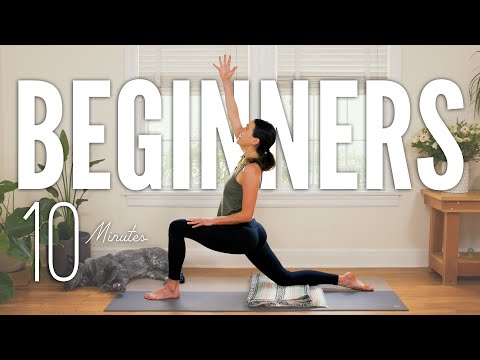Unlocking the Benefits of Yoga: A Beginner’s Comprehensive Guide
In today’s fast-paced world, more people are turning to yoga as a way to find balance, improve physical health, and gain mental clarity. However, for beginners, starting yoga can be overwhelming. From understanding the basic poses to learning about its historical roots and diverse benefits, the process may seem complex. This guide aims to demystify yoga, making it accessible and simple for everyone, regardless of experience or fitness level. We will cover essential concepts, explore the historical context, and examine practical applications so that anyone can confidently begin their yoga journey.
Introduction
Yoga, an ancient practice with roots in Indian philosophy, has evolved into a worldwide phenomenon. Today, millions of people use yoga as a way to strengthen the body, improve flexibility, and promote inner peace. However, yoga is much more than a physical activity. It incorporates breathing techniques (pranayama), meditation, and ethical principles, creating a holistic practice that benefits both the mind and the body. For beginners, understanding how to start practicing yoga can be daunting, but with the right guidance, the practice can transform both mental and physical well-being.
Key Concepts
Yoga is built on several foundational concepts that guide the practice:
- Asanas: The physical poses or postures in yoga. They help improve flexibility, strength, and balance.
- Pranayama: Breathing techniques that promote mindfulness, relaxation, and energy flow.
- Mindfulness: The practice of being present and aware during yoga sessions, essential for mental clarity.
- Chakras: Energy centers in the body, traditionally believed to affect emotional and physical well-being.
- Drishti: Focused gaze, often used during poses to enhance concentration and stability.
- Vinyasa: A style of yoga that links breath with movement in a flowing sequence of poses.
Historical Context
Yoga dates back over 5,000 years, originating in India. The practice was first mentioned in the Rig Veda, one of the oldest sacred texts. Initially, yoga was more of a meditative and spiritual practice. It wasn’t until the post-classical era (500 CE to 1500 CE) that asanas, the physical postures, became a prominent aspect of yoga. In the 19th and 20th centuries, yoga spread to the West, popularized by figures like Swami Vivekananda and later, teachers like B.K.S. Iyengar. Today, modern yoga has branched into various styles, incorporating physical, mental, and spiritual elements.
Current State Analysis
Yoga has seen exponential growth in the past few decades. According to recent surveys, more than 36 million people practice yoga in the United States alone. While many practice for the physical benefits, yoga is increasingly recognized for its mental health benefits, such as reducing anxiety and depression. However, the commercialization of yoga has raised concerns about the dilution of its traditional roots. It’s important for beginners to recognize that yoga is more than just a fitness trend and to approach the practice with respect for its deeper principles.
Practical Applications
Yoga’s adaptability makes it accessible to everyone. Whether you’re looking to improve flexibility, relieve stress, or enhance athletic performance, yoga can be tailored to meet your needs. Here are some practical steps to start your yoga practice:
- Choose a Style: Explore different styles like Hatha (gentle), Vinyasa (flowing), or Bikram (hot yoga) to find what suits your goals.
- Set Realistic Goals: Whether it’s improving flexibility or reducing stress, set clear, attainable goals to guide your practice.
- Start Slow: Focus on basic poses like Mountain Pose (Tadasana) and Child’s Pose (Balasana) to build confidence.
- Practice Regularly: Consistency is key. Even 10-15 minutes a day can yield significant benefits over time.
Case Studies
Yoga’s benefits have been well-documented through various case studies:
| Case Study | Focus | Outcome |
|---|---|---|
| Corporate Yoga Programs | Stress Reduction in the Workplace | Participants reported a 40% reduction in workplace stress over 6 months. |
| Yoga for Veterans | PTSD and Anxiety Management | Veterans practicing yoga experienced a 20% decrease in PTSD symptoms. |
| Yoga in Schools | Improving Student Focus | Teachers reported that students had better focus and reduced behavioral issues. |
Stakeholder Analysis
Yoga impacts a range of stakeholders, each with different interests:
- Health and Wellness Industry: A key driver of yoga’s popularity, benefiting from increased demand for yoga products and services.
- Yoga Instructors: Teachers who guide practitioners, often balancing traditional practices with modern adaptations.
- Medical Community: Doctors and therapists increasingly recommend yoga for its physical and mental health benefits.
- Yoga Practitioners: Individuals who practice yoga for personal wellness, seeking balance between physical, mental, and spiritual health.
Implementation Guidelines
For those new to yoga, here are step-by-step guidelines to ensure a successful start:
- Find a Qualified Instructor: A good instructor will provide modifications and ensure proper alignment to prevent injury.
- Invest in Basic Equipment: All you need is a yoga mat and comfortable clothing. Props like blocks or straps can help with flexibility.
- Listen to Your Body: Yoga should not be painful. Start slow and avoid pushing yourself too hard, especially in the beginning.
- Combine Yoga with Healthy Habits: Complement your practice with healthy eating and sufficient hydration.
Ethical Considerations
As yoga becomes more mainstream, ethical considerations have emerged:
- Cultural Appropriation: The commercialization of yoga in Western culture has raised concerns about respect for its origins.
- Inclusivity: Yoga should be accessible to people of all body types, abilities, and backgrounds. Teachers must ensure that their classes are welcoming to all.
- Ethical Teaching Practices: Instructors have a responsibility to maintain a safe and respectful environment for all students.
Limitations and Future Research
While yoga offers many benefits, it’s important to acknowledge its limitations. Yoga alone may not be a substitute for medical treatment, and some claims about its benefits are still being researched. Future studies should focus on understanding the long-term effects of yoga on mental health, especially in clinical populations. Additionally, more research is needed to explore the role of yoga in managing chronic illnesses such as diabetes and heart disease.
Expert Commentary
According to leading yoga instructors and health professionals, the key to starting a successful yoga practice is consistency and mindfulness. As one expert notes, “Yoga is not about how flexible you are or how strong you are. It’s about the connection between your mind and body. Beginners should remember that it’s a lifelong journey.” Whether you’re starting yoga for physical fitness, stress relief, or spiritual growth, the benefits can be profound if approached with patience and respect for the practice.








